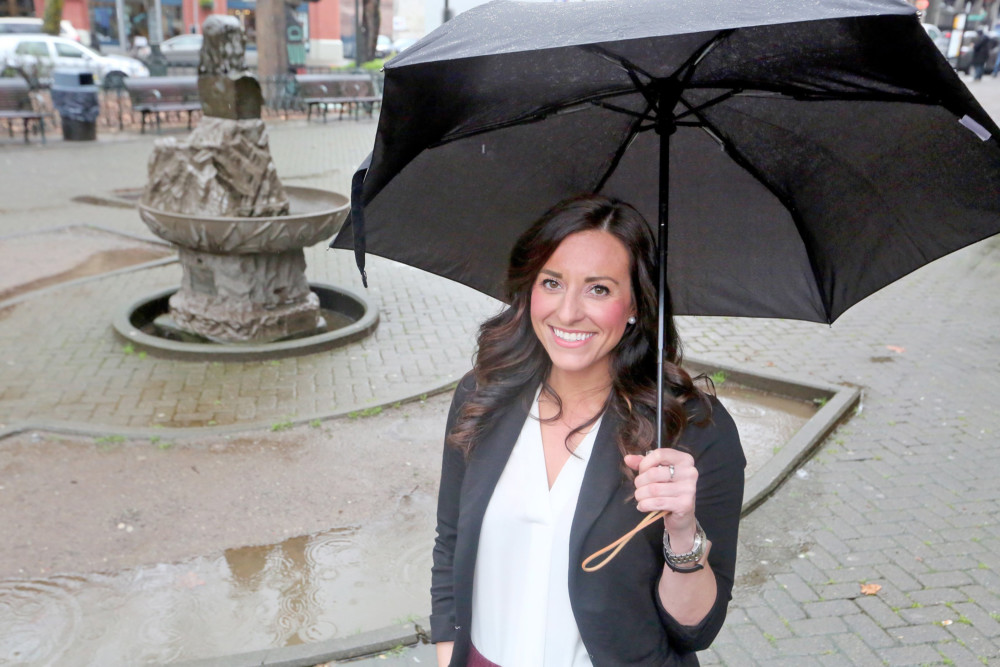By George Erb
The Seattle Times
WWR Article Summary (tl;dr) According to U.S. News & World Report, the average debt for Seattle University law students with loans who graduated in 2015 was $136,889. This article takes a look at why one woman is willing to take on law school debt and how she plans to handle her finances as she works towards her degree.
SEATTLE
Rachel Sindorf admits she’s a latecomer to the professional career ladder after spending much of her 20s working with horses at stables in the United States and Europe.
She loved the work. But the pay was modest, and “it’s a pretty rough lifestyle,” Sindorf said.
Now Sindorf is back in the Seattle area, where she grew up, and laying the groundwork for a legal career by working in the field and going to law school.
The 34-year-old has few assets, and her professional aspirations are forcing her to take on tens of thousands of dollars of debt. So when she saw in The Seattle Times a chance to get free financial-planning advice, she seized the opportunity.
“Free advice? Why not!” Sindorf said.
The Financial Planning Association of Puget Sound connected Sindorf with certified financial planner Stephanie Moreno and senior vice president Harry Smith at RBC Wealth Management in downtown Seattle.
Moreno and Smith saw Sindorf’s law-school debt as a rational, strategic investment in her future.
“Is it optimal? No,” Smith said of Sindorf’s student loans. On the other hand, he said, “She’s got a good game plan.”
Sindorf has strong family ties to Alaska, and in her early 20s she earned bachelor’s and master’s degrees in English at the University of Alaska Anchorage.
After a dispiriting stint as a technical writer, she decided to take off a summer at her family’s equestrian center in Palmer, Alaska, and ended up staying seven years. The experience led to other jobs at equestrian centers in Tennessee, Florida and the Netherlands.
Being around horses has its pleasures. But the work is hard, and Sindorf held a series of minimum-wage jobs that involved bucking hay, cleaning stalls, feeding horses and giving lessons.
She eventually used her English degrees to get teaching jobs around Memphis, Tenn., before returning to the Seattle area to launch a legal career.
Sindorf is currently the client service manager at the downtown Seattle law firm of Cairncross & Hempelmann, where she earns between $40,000 and $60,000 a year working full time.
She is also finishing her first year at the Seattle University School of Law, a program that she expects to complete in three years.
To finance her studies, Sindorf is borrowing about $21,000 a year at an interest rate of 5.84 percent. By the time she graduates, she can expect to owe about $63,000 in principal alone.
Even at that level, her debt will be less than that of many of her counterparts: The average debt for Seattle University law students with loans who graduated in 2015 was $136,889, according to U.S. News & World Report.
Although young attorneys at large firms often pull down six-figure salaries, compensation for other lawyers is far more modest.
The median starting salary nationwide for attorneys who graduated in 2015 was $64,800, according to the National Association for Law Placement.
Sindorf has other debts. She owes about $7,100 on her car, a 2008 Nissan.
She also has two credit cards with outstanding balances. Sindorf is carrying about $6,200 on her Bank of America card, while her Capital One credit card has an outstanding balance of $1,200.
Fortunately, Sindorf is able to control her living expenses by splitting the cost of her apartment with her boyfriend. She has nearly $2,000 in three bank and credit-union accounts.
Sindorf’s biggest asset is her Roth individual retirement account, which she opened 15 years ago at her grandmother’s insistence.
Her grandmother, an Alaska resident and a lifelong saver, took then-19-year-old Sindorf to an Anchorage bank and opened the IRA with $500.
Then she told her granddaughter to deposit $50 a month into the account, “no matter what,” Sindorf recalled.
Sindorf complied, and the account balance is now more than $14,000.
Moreno, the financial planner, urged Sindorf to pay off her costly Capital One credit card, which has a 23 percent interest rate, by borrowing against her Bank of America credit card. Its interest rate is 14.49 percent.
Sindorf was also making accelerated payments on her auto loan, which has a low interest rate of 2.99 percent. Moreno’s advice was to make only minimum payments on the car loan and instead use the money to first pay down the high-interest credit cards.
Sindorf made the switch.
Sindorf’s modest nonretirement savings concerned Moreno, who recommended stockpiling some money as an emergency fund.
She suggested socking away $12,000 in a fund that would act as a cash cushion in case Sindorf loses a job or falls ill.
Moreno and Smith also discovered that Sindorf was paying a 1 percent shareholder-service fee on her IRA even though she was getting no advice on the account from a broker. Getting rid of the fee, blandly disclosed as a “12b1 Expense percent”, could add up to significant savings over the life of the account.
As for Sindorf’s law-school debt, Moreno and Smith advised her to grow her way out of it by increasing her income and paying down the balance.
“She’s on the right track,” Smith said. “She’s got the discipline to make this all work.”














































































































































































































































































































































































